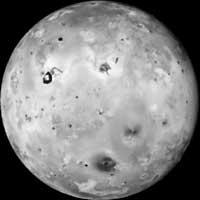Galileans in the highest, despite the four hundred years
2010/01/01 Lakar Iraizoz, Oihane - Elhuyar Zientzia Iturria: Elhuyar aldizkaria
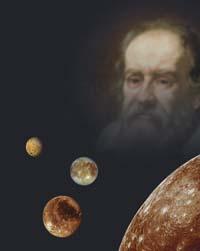
Jupiter and the four great satellites surrounding Jupiter can be seen with simple binoculars. And it was not much more than a normal prismatic when he discovered the artiluge that Galileo used in 1610. Since then, they have been very useful for the human being: they have helped to understand the structure and functioning of the universe and to determine the speed of light, among other things.
"It was the first independent system that knew the human being," highlights the astrophysicist of the UPV, Santiago Pérez-Hoyos. That is, for the first time, the existence of bodies that move independently of the Earth was observed. And this system was very used, even outside astronomy. For example, the XVII. The sailors of the twentieth century knew that they were both along the Earth and along these satellites. "For this purpose they used a system designed by himself," added Pérez-Hoyos.
Due to its relative importance, from the Earth numerous studies have been carried out on these satellites, which continue to be carried out. But the contributions of the Galilean satellites skyrocketed when space agencies sent probes there. "The first probes, Pioneer 10 and 11, and especially Voyager 1 and 2, caused a radical change in our knowledge of the solar system," explains Pérez-Hoyos.
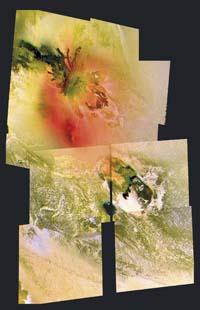
For example, the Voyager probes demonstrated the presence of Ion volcanoes and their enormous geological activity. Ion has very violent volcanoes and mountains higher than Everest. All this in a satellite that represents a quarter of the Earth.
The high geological activity of this type of small satellites did not correspond to the existing expectations. "We have always thought that any body of space could not be a geological activity. We thought they had to have a certain mass and size so that their internal energy was large enough to provoke activity," explains Jesús Martínez-Frías, planetary geologist at the CSIC-INTA Center for Astrobiology. However, Galilean satellites have shown that it does not have to be this way, and that small bodies like Io can have a volcanic activity if they receive the necessary energy from outside.
In this case, the external energy source is, to a large extent, Jupiter itself. Its large mass causes a huge tidal force in Ion. As a result, Io deforms a little as he rotates around Jupiter. When deformed, the components of Io, rocks and ice pieces rub together, generating heat during frictions and causing volcanoes.
Besides Jupiter, there are other factors that increase the tide force. One of them is the peculiar system of gravity formed by Io, Europe and Ganymedes. They do not spin anyway and all affect everyone. They are said to be in resonance, that is, in resonance 1:2:4. This means that Ganymede, the furthest from Jupiter among the three, makes two laps to Europe during the time it takes to turn and Io, the closest satellite, makes four laps.

Europe, candidate for life signs
The great tidal force not only affects Io, but it is also influenced in Europe. The surface of Europe is bright and very flat, suggesting that measurements made also indicate that it has almost ice on the surface. "However, local ice may have nothing to do with what we have on Earth," said Martínez-Frias. The temperature in Europe is -160 °C in the equator and -210 °C in the poles. In these conditions, ice is as hard as granite and in relation to ice there is a complex geology in Europe: "In short, ice is another mineral and, in these conditions, it produces a volcanic activity called cryomagmatism: there are volcanoes, but the magma that leaves the volcanoes is not like that of here, of silicate, but of ice", he says.
Observations made in Europe suggest that under this ice surface there are also components related to ice. As it happens in Ion, Europe is also influenced by the tidal force, so experts believe that it is very likely that in Europe there is a large ocean of liquid water that is founded by rubbing each other.
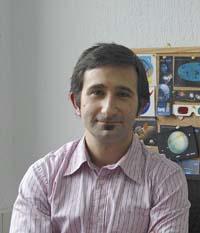
This idea is reinforced by the cracks seen on the European surface: "They are very interesting because they indicate that the satellite has geodynamic activity," explains Martínez-Frías. In addition, the approximate probes have detected the presence of salts in Europe through spectrometers. "The presence of water, salts and geodynamic activity in a given place suggests that there may be a certain life in Europe," he said.
Ganímedes and Calisto in the shade of others
One for his great activity, for his spectacularity, and the other for his firm candidate to be alive, Io and Europe end up taking the attention of the experts. Thus, Ganymedes and Calisto have stood aside, despite being the largest Galilean satellites. "In this family of four relatives, two have a huge protagonism, which does not mean that others are not interesting, but not enough attention is paid to them," said Martínez-Frías.
"And it is possible that Ganimedes will surprise you", he added. And it is that Ganimedes can also have a sea of liquid water under the surface. But it is not so clear, because the models of Ganimedes are not as elaborate as the Europeans. It seems, however, to be deeper than in Europe. In addition, it is the only satellite of its magnetic field among the Galileans, with materials of different texture or structure on its surface, orbiting together with the other two in resonance, etc. That is to say, although it has gone missing when setting priorities, in Ganimedes there is no doubt that there is something to analyze.
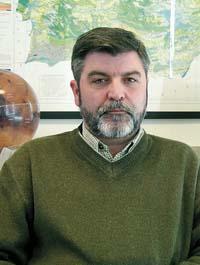
If despite its peculiarities Ganimedes has not attracted researchers to himself, imagine where Calisto is on that list of priorities. Calisto is full of craters, which indicates that it has a very old surface. Therefore, despite the geological performance, this would not be sufficient for the remodeling of the surface. In addition, it is not in resonance with others and, in case of having liquid water, it would be more within than Ganymedes.
In the future, in Europe
Between Io and Europe is undoubtedly the second favorite of scientists. And it seems like this will continue in the coming years. And it is that scientists do not seem to want to lose the opportunity to know if there is life in Europe, if it has existed or if it has conditions to be ever.
Thus, NASA, ESA Europea and JAXA Japanese are working together to advance the EJSM/Laplace mission that will study Europe and Jupiter in particular. "They are in the last phases of acceptance of the mission and are doing much strength agencies," explains astrophysicist Pérez-Hoyos.
In this mission you will know many more details of Europe. They will still have a challenge to overcome: To reach the sought after European ocean, that is, to enter the interior of Europe. But this goal is still far away.

Gai honi buruzko eduki gehiago
Elhuyarrek garatutako teknologia





